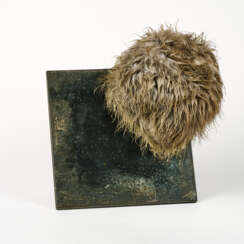
Post War Sculptures — 1215. Auction ONLINE ONLY | Abstraction to Figuration. 70 Works from a Rhenish Collection

Günter Weseler was a German artist. He became known for his “breath objects”, which make up the main part of his work. With these “New Species”, as he called his objects, Weseler was one of the most important German avant-garde artists of the 1960s and 1970s. At the beginning of his artistic career, Weseler kept coming back to painting. At times he turned to the fantastic, he painted cubist staggered houses, approached organic associations in abstract images with spatula work. In 1964, Günter Weseler began to study the phenomenon of breathing. In 1966 he went on to "visual shaping of the rhythm of breathing" with breathing balloons inflated with compressed air, about two meters in size, from which the air escaped again, and finally to the mechanically controlled fur objects. He placed his faceless, breathing fur creatures in the most varied of life situations. Depending on location, place and situation, they can completely change their character.

Erwin Heerich was a German artist.
Heerich emphasized that for him, "cardboard, like polystyrene, had no specifically aesthetic or historical connotations, the materials are value-neutral to the largest possible extent." Furthermore, the artist was not primarily "concerned with the manifestation of an art object, but with making an idea material in terms of a specific problem: how space can be presented and formed."
























